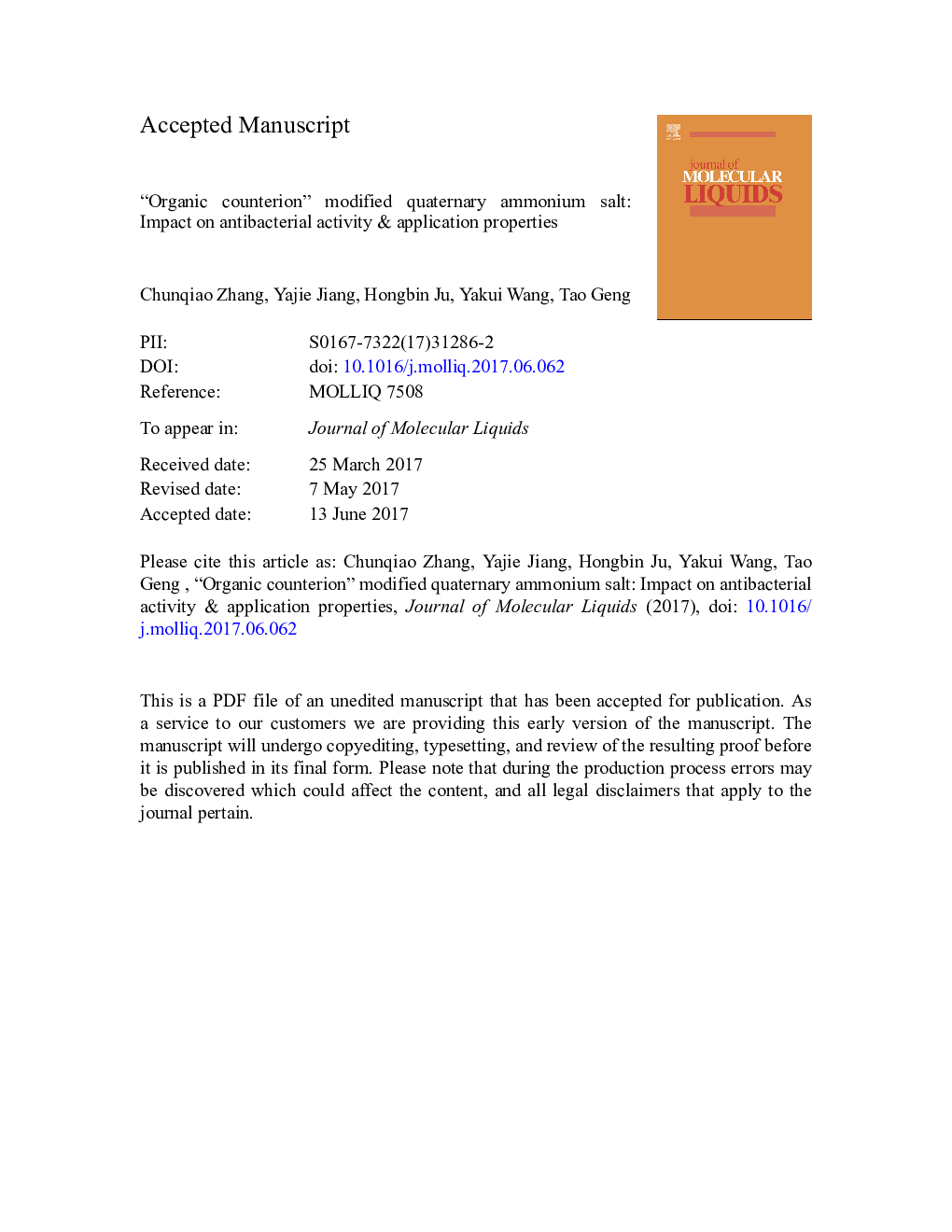| Article ID | Journal | Published Year | Pages | File Type |
|---|---|---|---|---|
| 5408369 | Journal of Molecular Liquids | 2017 | 19 Pages |
Abstract
Quaternary ammonium salts (QAS) with organic counterion (QAS-OC) impact on surface tension, micelle aggregation, antibacterial activity and three application properties were investigated by surface tension, steady-state fluorescence, bacteriostatic assay, foaming property, contact angle and emulsifying performance measurements. Besides the alkyl-chain-length of its cationic part on antibacterial activity was also investigated. It is demonstrates that micellization and surface adsorption first decreasing and then increasing as the alkyl-chain-length of organic counterion exceed 2, i.e. C16NC2 (cetyltrimethylammonium acetate). The number of aggregates (Nagg) also follow this law as the change of counterion at a same concentration of 5Â mM. Antibacterial test reveals that the increasing counterion length moderately impairs antibacterial activity, and there is a slight influence for the dealing time of antibacterial agent on antibacterial activity. The minimum concentration of C16NCx for bacterial rate of 99.9% is 40Â mg/L. It shows the antimicrobial activity for different bacteria strain follow this order: Staphylococcus aureus (S. A.)Â =Â Monilia albican (M. A.)Â >Â Escherichia coli (E. coli)Â >Â Bacillus subtilis (B. S.)Â >Â Pseudomonas aeruginosa (P. A.). Bactericidal activity result indicates a fine sterilizing rate of 99% can be obtained at concentration of 40Â mg/L. On the other hand, the alkyl chain length of cationic part has significant impact on antibacterial activity, and only when single alkyl-chain-length beyond C12 dose the QAS has an effective antibacterial rate (>Â 50%). The application property of foam height and its stability only build up as the alkyl-chain-length of counterion beyond 6 (C16NC6). Both the wetting ability and emulsion stability have a similar variation law as the former.
Related Topics
Physical Sciences and Engineering
Chemistry
Physical and Theoretical Chemistry
Authors
Chunqiao Zhang, Yajie Jiang, Hongbin Ju, Yakui Wang, Tao Geng,
